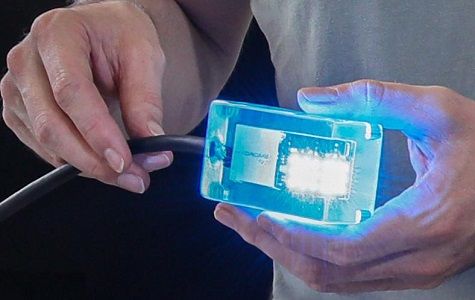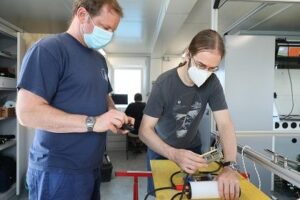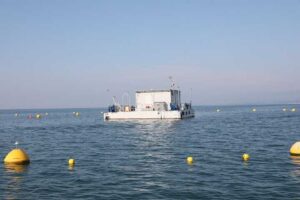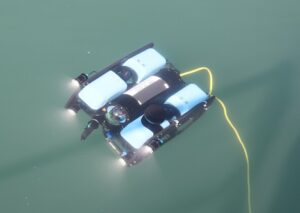
Visits: 24
– If you want to use a connected device underwater, you don’t have many options. Radio waves do not work well, they are easily absorbed by water, which means that they cannot go much beyond a meter.
Courtesy EPFL by Sandy Evangelista: EPFL‘s spin-off Hydromea has developed a miniature optical modem that can operate up to 6,000 meters below the ocean’s surface. It is sensitive enough to collect data at very high speeds from sources more than 50 meters away. Many sensors offer only a wired connection, but they are impractical because you have to remove devices from the water to retrieve your data. Acoustic communication is often used, but it is very slow and unreliable.
These are significant obstacles to effective communications when it comes to underwater construction, inspection, monitoring and repair activities, as in the offshore energy sector. Limnology research is another field affected by this problem. However, Hydromea engineers found a solution: using light to transmit data below the ocean or the lake’s surface. They developed an underwater modem called LUMA that communicates via a blue light that flashes quickly.
The modem converts data into pulses of light it sends or, conversely, converts pulses of light it receives into data, all in the blink of an eye. “Our optical modem offers a fast underwater wireless connection,” says Alexander Bahr, COO at Hydromea.
At the same wavelength
“We chose blue light because, although the water is generally opaque for electromagnetic waves, there is a small strip of transparency for blue and green light. This is what allows our system to send and receive data over long distances ”, says Felix Schill, the company’s CTO.
Although water readily absorbs most waves, especially infrared, only blue and green light can travel through it. The waves of red and yellow light from the sun are absorbed in just a few meters.

The hardest part about developing LUMA was making sure that it could send data over long enough distances and work reliably under all types of conditions. “Because light often diffuses so quickly underwater, finding a way to send communications over 50 or 100 meters was difficult,” says Schill. “It took us a long time to develop a receiver sensitive enough to capture small pulses of light, even from a distance.”
Searching the depths
LUMA was designed to operate at depths up to 6,000 meters. It is a unit completely contained in a plastic housing, which is completely wrapped in transparent plastic so that it does not collapse under extreme water pressures. The system has already been tested in the Pacific Ocean, 4,280 meters below sea level, by scientists at Germany’s Alfred Wegener Institute for Polar and Marine Research. This is the first research institute with which Bahr and Schill started working.
“Subsequently, we were contacted by companies operating offshore that were interested in our technology for placing underwater pipelines or building foundations for offshore wind farms,” says Bahr.
Bahr and Schill began researching underwater Wi-Fi systems when they were both students in Australia in 2004. They refined their project details over the years and completed it during their postdoctoral work at EPFL. Today they still collaborate with the School. For example, they are helping to develop robotic and communication systems for LéXPLORE, a research platform located near the shores of Lake Geneva, in elegant Pully Vidy.

There, limnologists are using LUMA to regularly check the data collected underwater and make sure that the measuring instruments are working correctly, since the sensors need to remain underwater for months on end. One modem is installed in the data logger that collects scientific data from the submerged sensors and the other modem is installed in an underwater robot that dives to where the sensors are located and collects the sensor data instantly. “LéXPLORE scientists give us feedback on their specific needs and this helps us to further improve the performance of our modem,” said Bahr.

Related article: New plasmonic chip for ultrafast data transmission using light